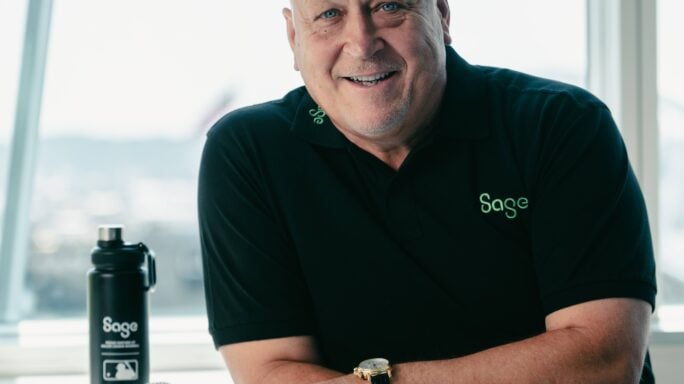People & Leadership
How two simple words can keep your best people engaged at work
Learn from expert Sarah Stockdale on how two simple words can retain your best talent.

Early in my career I found myself in charge of an intern team of 5 college students. If you’ve never managed more than 1 intern in the past, just picture Slack notifications filled with ideas and questions. 1 intern would send me late night ideas for the business all the time. They were full of energy and inspiration—and often risky and expensive marketing ideas.
And because I was a new manager, and because I was someone who thought I knew a lot about the business, I found myself saying no all the time.
No, we can’t run that program.
No, we don’t have budget for that.
No, we don’t have the bandwidth for that.
Member Masterclass: Talks from the world's leading experts
Learn how to find and keep great people. All Sage customers and partners have automatic access to Sage Membership, which includes Member Masterclass. For a limited time, this member resource is open to everyone.

It wasn’t that I didn’t want to innovate, and it wasn’t that I didn’t want to change the way things were done—it was simply that I was overwhelmed with their ideas. I was a young manager who really didn’t know how to channel the energy and passion of the folks on my team. Over the course of a few months, these 5 motivated, excited, talented, (but unfocused) young professionals had stopped pitching ideas at all.
Was my life managing them a bit easier? Maybe a bit.
But were they as engaged at work as they were from the start? Of course not.
Were we bringing new and exciting projects forward? Nope.
Was I a good manager? No.
I was a gatekeeper. Even though I didn’t mean to, I repeatedly refused ideas, passion, and energy at the door.
Now, 10 years and multiple companies later, I’ve adopted a very different approach to managing smart young people—and it stemmed from bringing 2 small but really powerful words into my management philosophy:
Yes, and.
Yes, and is the bedrock of improvisational comedy. It emerged from the improv exercises and techniques developed by Viola Spolin in the mid-20th century. In improv, your goal is collaboration. You’re building a world with other people on stage, and each idea is a gift that your scene partner is offering you, a material that can help you build a world for your audience to engage with.
As managers, we can either default to no, and choose to manage as a gatekeeper or default to yes, and, and choose to listen and collaborate and build with our teams.
I know what you’re thinking—I can’t just say yes to all of my employee’s ideas, that would be chaos.
Member Masterclass: Talks from the world's leading experts
Learn how to find and keep great people. All Sage customers and partners have automatic access to Sage Membership, which includes Member Masterclass. For a limited time, this member resource is open to everyone.

It would, but yes, and isn’t about greenlighting everything. It’s about creating a framework of collaboration where more ideas can be built on by your team. Here’s how you can implement it to build an engaged, focused, and energetic team:
- Give them the blueprint
It’s hard for you to help your team members build on their ideas if you don’t have enough information. Having half-baked ideas lobbed at you is frustrating and wastes time. As the manager, you have to set the team’s goals and direction—so they know what you are focused on accomplishing together so your team knows how to focus on the right things. Then, you need to set clear expectations about the level of thought you expect to go into something before it arrives on your desk. Help your team learn how to do the pre-work before they bring ideas to you. I used a simple Google form to outline all of the key pieces of information I’d need before I’d be able to consider an experiment or campaign—so when a team member had an idea, they’d know what pre-work was necessary to pitch it.
- Build it together
You probably won’t be able to say yes fullstop to even a well thought out idea, which is where the and comes in. Real collaboration starts with curiosity, so before you jump in and offer changes—make sure you ask a lot of clarifying questions to fully understand your team member’s thought process. This will give you insight into how they think and make decisions, which will make you a more thoughtful and effective leader. Once you have all of the information, then you can jump in and work together to mold the original idea into something that could really move the business forward.
- Be open to pivots and failure
One of the main reasons I said no so much as a young leader was because I didn’t want to try things I wasn’t sure would drive results. This closed me off to opportunities that could have made a big impact on the business, if I had just been able to accept that little bit of risk. In improv, all of the scene partners know that the whole thing could be a bust—and they accept that failure is baked into creating something new. The point is to try, and as a team, pivot, learn, adjust, and recalibrate so you can move the idea forward, together.
Yes, and is about fostering a culture that encourages ideas to be shared, moulded, and improved collaboratively. It’s about setting clear expectations so your team can develop well-thought-out ideas that align with the goals of the business. It’s about being open to a little bit of the right kind of risk, so your team can be part of positive change in the business.
Member Masterclass: Talks from the world's leading experts
Learn how to find and keep great people. All Sage customers and partners have automatic access to Sage Membership, which includes Member Masterclass. For a limited time, this member resource is open to everyone.

Adding yes, and into my management philosophy transformed the way I lead. Not only has it helped me maintain energy and engagement with my teams, but it’s made me a more curious, thoughtful, and effective manager. So, if you’re feeling like a referee or a gatekeeper in your management style, like I was, I hope this gives you an alternative way forward. You might just build something great.






Ask the author a question or share your advice